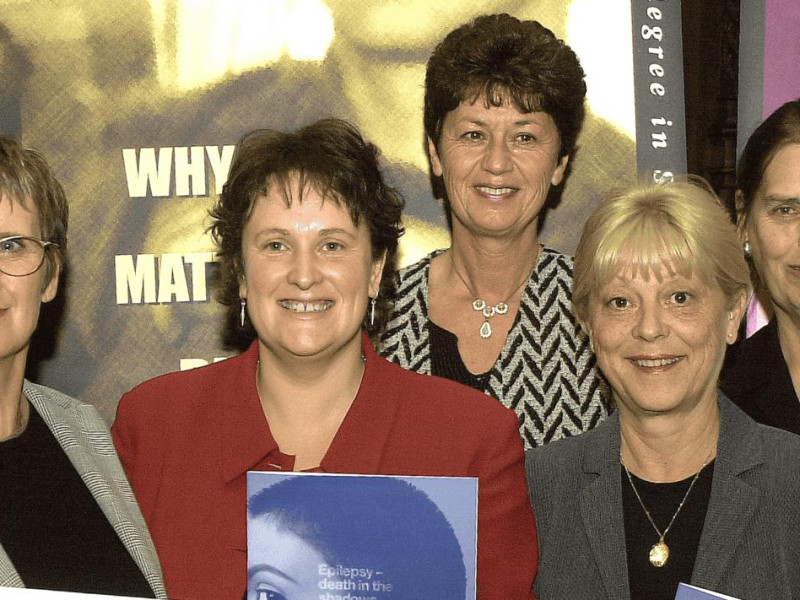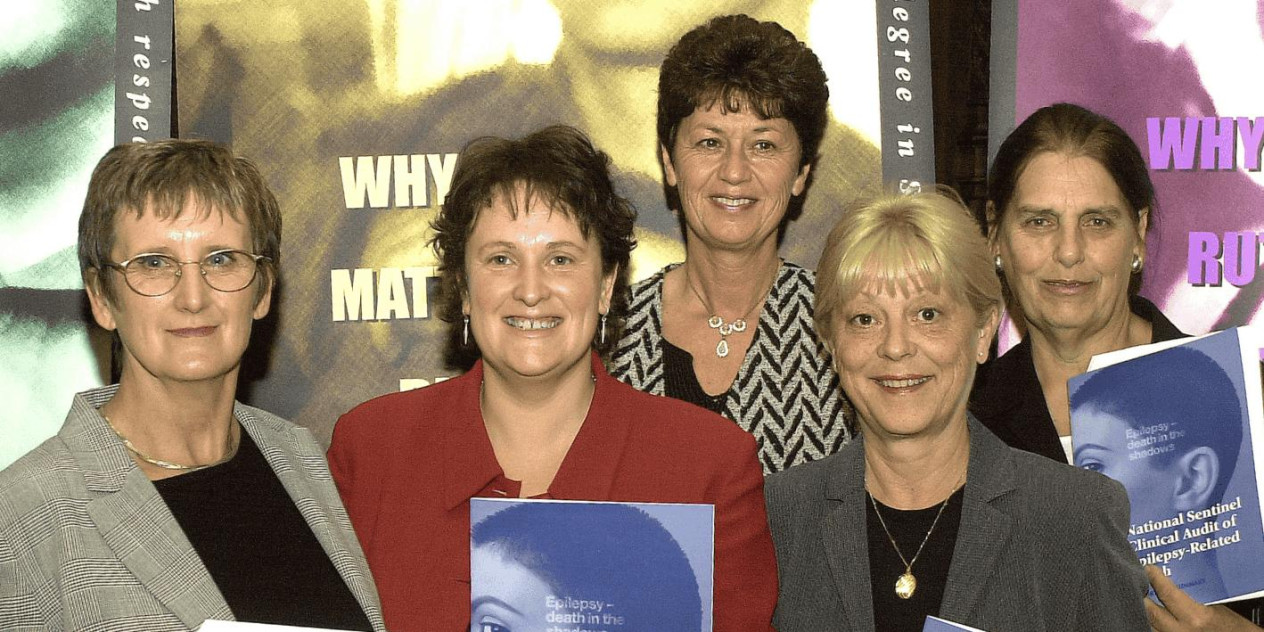

SUDEP Action is 30 years old this year.
The charity wasn’t started by doctors, researchers, clinicians or medical professionals. It was started by five bereaved women wanting answers. Five women who wanted to know why their sons, daughters and partners – who were young and healthy, but lived with epilepsy – had died suddenly, unexpectedly and without explanation.
SUDEP Action, formerly known as Epilepsy Bereaved, began thirty years ago as a movement of grieving people who knew what they were being told wasn’t right and wanted to change things for the better.
That’s still our goal. We’ve come a long way since 1995 but there’s still a long way to go.
***
The letter is dated February 3rd 1992. It’s handwritten on two sides of A5 sized writing paper.
It reads: “You appeared on Watchdog tonight. I am very interested in your partner’s case. My son died suddenly and unexpectedly of a fit on November 23rd 1991. He had epilepsy but not at all badly and had just won a place at Durham University to do an MA. When I try to find out the statistics of unexpected sudden death in epilepsy I meet a blank wall. I truly believe it is a hidden figure not calculated properly, rather like cot deaths twenty years ago. Would you be interested in trying to establish a movement? If only for the sake of others? Please think about it as someone with your training could really do something to change things.”
The letter was written by Catherine Brookes, one of SUDEP Action’s five founders, to another founding member, Jane Hanna. However, at the time Catherine didn’t even know Jane’s name, ending the letter: “I hope this letter reaches you, I am sorry, but I only heard about the programme and do not know your name.”
Catherine’s son Matthew died suddenly and unexpectedly. He was 21. Jane’s partner Alan died suddenly and unexpectedly in December 1990, aged 27. Both men were fit and well. Both had epilepsy.
Devastated by Alan’s death, Jane approached neurologists and sought explanations, answers and information. Her appearance on the BBC’s Watchdog programme brought her and Catherine together, united in grief and frustration. Why had no one told them someone could die from epilepsy? Jane and Catherine had thought about setting up a support group. Over many telephone calls and written correspondence, the women shared their pain of grief, loss, ignorance and isolation. Why had they never been told the facts that surround epilepsy? And how many more families had lost loved ones in a similar way to them?
“There was a total lack of acceptance by the medical profession that you could die from epilepsy, or a sense that it was so rare it was not worth mentioning” explained Jane Hanna, who still works as SUDEP Action’s Director of Policy & Influencing.
In July 1992, The Guardian ran an article headlined ‘What did they die of?’ which focused on the death of Matthew Brookes, from ‘a rare but little recognised syndrome, Sudden Unexpected Death in Epilepsy’.
Securing news coverage such as this mattered enormously in a pre-internet era where establishing connections with other families was a major struggle. Jane and Catherine realised from the outset that high profile newspaper articles were important to waking up the world to the fact that people were dying from epilepsy, gaining acceptance and recognition for SUDEP and letting other families know ‘here we are… come and join us.’
Sue Kelk had no idea someone could die from epilepsy, until the tragic death of her daughter Natalie in April 1992. After seeing the article in The Guardian, she reached out to Jane, Catherine and Sheila Pring – mother of Alan, Jane’s partner – with the help of the British Epilepsy Association.
Some research work was being carried out – Dr Stephen Brown, Consultant Neuropsychiatrist at the David Lewis Centre for Epilepsy, had been researching death in epilepsy for some time. Research papers on sudden death in epilepsy were also beginning to appear in medical journals.
Stephen Brown – bravely at the time – accused pathologists of failing to record epilepsy as the primary cause of death, commenting: “Typically, these deaths are wrongly ascribed to asphyxia, exertion, or status epilepticus, an incredibly rare state of prolonged seizure which cannot be detected from post-mortem examination.” He claimed inaccurate death certification was masking the problem, with coroners and pathologists not appreciating the importance of getting death certificates right, if research was to be of value.
Jane Hanna, Catherine and Chris Brookes, Sue and Ray Kelk, and Sheila and Colin Pring met briefly in London in September 1992 at a launch organised by Jennifer Preston to raise funds for a booklet ‘Epilepsy and the Young Adult’ in memory of William Preston, who died from Sudden Death in Epilepsy in 1988.
This coming together sowed the seeds of what was to follow; and Jennifer would later become actively involved in the launch of Epilepsy Bereaved, the organisation formed in 1995 which subsequently became known as SUDEP Action.











